The Truth About “Anesthesia-Free Dentals”
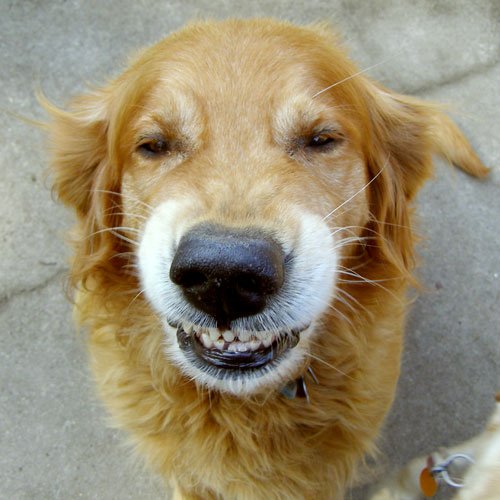
Thinking about having a groomer or pet store clerk clean your pet’s teeth? Not so fast – dental care is a lot more than cosmetic. ‘Anesthesia-free dentals’ are misleading and could potentially be harmful to your pet’s long term health.
What is an Anesthesia Free Pet Dental Cleaning?
You might have heard about anesthesia free dental cleanings from a local groomer, pet store, word of mouth or even some veterinary providers. Commonly known as anesthesia free dental cleanings, the practice involves scaling (scraping with an instrument) of a dog or cat’s teeth without putting the pet under anesthesia.
Veterinarians often refer to the practice of scaling the teeth without anesthesia as non-anesthesia dental scaling (NAD or NADS), as the term “cleaning” is misleading to pet owners who have the impression that after one of these procedures, their pet’s mouth is clean and healthy. It may sound like a great option, but what exactly does this procedure involve?
First, the title of the procedure is accurate in that there is no anesthesia involved. This means your pet must be physically restrained, some at higher levels than others, in order for the provider to access the animal’s teeth. A provider will often tell a pet owner it is just like a human going to the dentist, which is absolutely not the case. While some pets may appear to tolerate this restraint better than others, your pet is still being restrained for a lengthy period of time with no ability to understand why or what is happening to them.

Nobody could expect a dog or cat to patiently sit like this through exam, cleaning, cleaning below gumline and radiographs.
How many people actually enjoy sitting in the dental chair, holding their mouth open while a dental hygienist scrapes mineralized tartar from their teeth? Imagine how a pet, who can’t communicate, feels when the NAD provider holds open their mouth and attempts to do the same. We can understand what the dentist or hygienist is doing and can be asked to hold still and relax, but the pet does not understand and thus will frequently require a traumatic restraint process.
The next step is using a sharp instrument to remove plaque from the visible part of the tooth, or scaling the crown of the tooth.
The discoloration of your pet’s teeth is essentially layers of plaque and bacteria that have built up over time, which is only eliminated from the visible portion of the tooth by using a sharp hand instrument called a scaler.
Consider your visits to the dentist and the minor scaling that sometimes has to be done to remove some of the tiny spots of plaque build-up. Now, take a look at your pet’s teeth and think about how it might feel to have that amount of build-up scraped from your teeth. It certainly could cause a great deal of discomfort and pain to your pet.
At the end of the anesthesia free dental procedure, the outside surfaces or your pet’s teeth may appear visibly whiter. However, there is much more than meets the eye. Because your pet wasn’t under anesthesia, there was no ability to clean beneath the gumline where the bacteria that causes periodontal disease occurs and causes bad breath and extensive damage to tooth roots and supporting bone structure.
White teeth do not mean a clean and healthy mouth. This is the most unfortunate misconception by many loving pet owners, who don’t realize the potential oral health problems that sit beneath their pet’s gums.
The best dental care for your pet is a regular veterinary dental cleanings under anesthesia.
Contact us if you have any questions or would like to schedule an exam.
What is a Professional Veterinary Dental Cleaning?
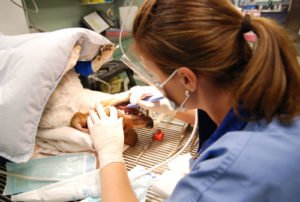 As a pet owner, you have your pet’s best interest at heart and want to make the best choice for their care. When choosing your pet’s dental care, be sure to learn about a comprehensive veterinary dental cleaning, also known as a professional dental cleaning, and its long term benefits for your pet’s overall health.
As a pet owner, you have your pet’s best interest at heart and want to make the best choice for their care. When choosing your pet’s dental care, be sure to learn about a comprehensive veterinary dental cleaning, also known as a professional dental cleaning, and its long term benefits for your pet’s overall health.
What you can expect from a professional veterinary dental cleaning:
A veterinary dental cleaning always begins with an initial awake oral exam of your dog or cat’s mouth by a veterinarian or a veterinary dentist. This allows the veterinarian not only to get a general idea of your pet’s dental condition, but also offers you the opportunity to ask questions and to get good advice for home care that can benefit your pet.
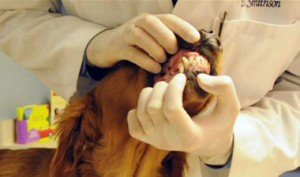 Your pet has blood drawn for analysis to identify any potential problems that the doctor needs to be aware of and to determine if the pet is healthy enough to undergo anesthesia.
Your pet has blood drawn for analysis to identify any potential problems that the doctor needs to be aware of and to determine if the pet is healthy enough to undergo anesthesia.
Your pet is anesthetized. This is what often worries most pet owners, however, under proper protocols anesthesia is very safe. We encourage pet owners to ask their veterinarian about their anesthesia protocol and experience prior to scheduling a procedure. Find questions to ask your veterinarian before anesthesia.
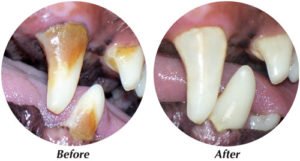 A veterinary dentist and some other veterinarians will also use a local anesthetic in your dog or cat’s mouth during procedures. This allows the veterinarian to use less general anesthetic thereby improving the safety of the anesthetic procedure and allowing your pet to recover more quickly and with less pain.
A veterinary dentist and some other veterinarians will also use a local anesthetic in your dog or cat’s mouth during procedures. This allows the veterinarian to use less general anesthetic thereby improving the safety of the anesthetic procedure and allowing your pet to recover more quickly and with less pain.
While under anesthesia, a comprehensive veterinary dental cleaning will include the following, without any pain or discomfort to your pet:
- A complete oral exam and radiographs (x-rays) to identify any problems beneath the gum-line. (This is similar to the x-rays you might receive from your own dentist.) Common painful problems that could be identified with radiographs are broken teeth and roots, periodontal disease, dead teeth, abscesses or infected teeth.
- A full cleaning under the gum-line where periodontal disease lurks. It would be impossible to clean this area on an awake dog or cat, but this is where periodontal disease begins with bacteria ‘living’ below the gum tissue.
- Professional scaling and polishing of the crown, or visible part of your dog or cat’s teeth. A veterinary cleaning does require scaling or scraping the tooth to remove plaque and calculus. Scaling is completed to remove plaque and tartar build-up on the tooth crown. Last, the teeth are polished leaving a completely smooth surface of the tooth which discourages plaque and bacteria from adhering to the rough tooth surface.
After recovery, your dog or cat is most often able to go home and unless an additional procedure has been done, your pet can eat and return to normal. Your veterinarian should give you a full report of findings and any recommendations for home care in between cleanings.
Questions to Ask Your Veterinarian about Pet Dental Cleanings
We know you want the best for your pet and often pet owners are nervous about taking their pet for a veterinary dental cleaning because they are fearful about their pet being put under anesthesia for the procedure. First, we want to reassure pet owners that under the correct protocols, anesthesia is very safe and is far less dangerous than the periodontal disease that will develop without proper cleanings.
When preparing to take your pet for a veterinary dental cleaning, here are some questions you can ask your veterinarian to give you peace of mind about your pet’s safety and the care you can expect.
Questions about Anesthesia:
- Do you perform laboratory work for my pet prior to anesthesia?
Laboratory work will be recommended by your veterinarian to evaluate your pet’s internal organ function prior to anesthesia. - Who performs and monitors the anesthesia process?
- You should confirm that your pet is monitored under anesthesia by a trained veterinary technician who monitors blood pressure, blood oxygen saturation, end tidal carbon dioxide, electrocardiogram, respiratory rate and body temperature. Intravenous fluids should be administered throughout the procedure to help maintain your pet’s blood pressure and provide intravenous access for additional drugs if they are needed. Your pet should be kept warm with warming blankets during the procedure. Your veterinarian should be happy to discuss every step of the process with you.
- What is your full anesthesia protocol?
You should confirm your pet’s blood pressure and blood oxygen are constantly monitored by a trained veterinary technician, that IV fluids are administered throughout the procedure and pets are kept warm with warming blankets during the procedure. Your veterinarian should be happy to discuss every step of the process with you. - Ask for the practice’s anesthetic safety record. AAHA certified veterinary practices are required to keep anesthesia safety records. You can ask about this record and a practice should be more than happy to share this information with you.
Questions about the dental procedure?
-
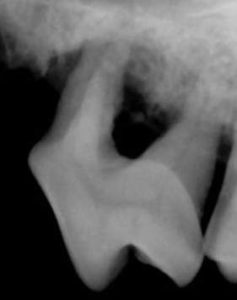
After years of anesthesia free pet dentals, this dog had lost so much bone structure due to undetected periodontal disease.
Do you take radiographs as a standard practice for all cleanings?
A comprehensive veterinary dental cleaning will include radiographs. This is the only way to identify other painful problems that may exist in your pet’s mouth under the gum, in the bone or involving the tooth root due to periodontal or endodontic disease. - Do you use localized nerve blocks?
Local nerve blocks, in addition to pain medication administered prior to anesthesia, reduces the need for general anesthetic, improving the safety of the procedure and making your pet’s recovery faster and less painful. - What is your protocol if you identify a problem?
You should ask your veterinarian how they handle disease that they find and if they will discuss the findings and treatment options with you immediately. You may also want to ask how they handle any complex issues they find such as broken teeth, bone loss or other problems. In many cases a specialist can save teeth with root canal procedures as opposed to extraction – keeping teeth intact when possible can prevent future dental problems to a pet.
Contact us if you have any questions or would like to schedule an exam.
Info courtesy of American Veterinary Dental College (AVDC)- Behavior (15)
- Caring for your pet (292)
- cat (16)
- Community Events (20)
- dog (17)
- From Our Clients (15)
- Happy Tails (12)
- News (454)
- Press (53)
- Products (2)
- Questions (4)
- Recalls (1)
- Special Offers (6)
- Tips & Advice (231)
- Uncategorized (21)
- Veterinary Services (49)
